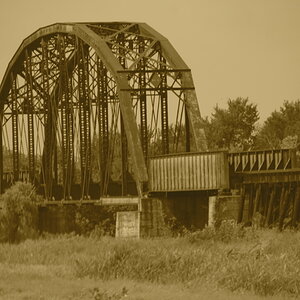Hi
Sometimes I really have a problem with the contrast of my photos, or it's too gray, or my black isn't black enough..
I doubt it has something to do with my camera configuration; sometimes I put my Minolta on Automatic, sometimes I mesure the light from the ground,...
But if there's something that I should really keep in the back of my mind to control the contrast, please tell me, I find it quite difficult...
I always use the time that stands in the inside of the film box when developing: first minute constant agitation, then each 30 secs... Should I develop longer to gain contrast?
And when enlarging my pictures, I always have to use filter #2, 3 or higher, I've never used lower than 2 before...
Can someone help me?
Thanks
Sometimes I really have a problem with the contrast of my photos, or it's too gray, or my black isn't black enough..
I doubt it has something to do with my camera configuration; sometimes I put my Minolta on Automatic, sometimes I mesure the light from the ground,...
But if there's something that I should really keep in the back of my mind to control the contrast, please tell me, I find it quite difficult...
I always use the time that stands in the inside of the film box when developing: first minute constant agitation, then each 30 secs... Should I develop longer to gain contrast?
And when enlarging my pictures, I always have to use filter #2, 3 or higher, I've never used lower than 2 before...
Can someone help me?
Thanks


![[No title]](/data/xfmg/thumbnail/38/38262-10a9668da9a2b36a92cddde57caf87bc.jpg?1619738547)





![[No title]](/data/xfmg/thumbnail/38/38263-ad5e4c9e677626ddb5b1e7cdf9ebe40e.jpg?1619738548)
![[No title]](/data/xfmg/thumbnail/33/33421-38d09827e584b8381c5e3a468cdf0159.jpg?1619735961)



![[No title]](/data/xfmg/thumbnail/37/37518-fb05b52482bd05e84fb73316ba1a9c8f.jpg?1619738128)